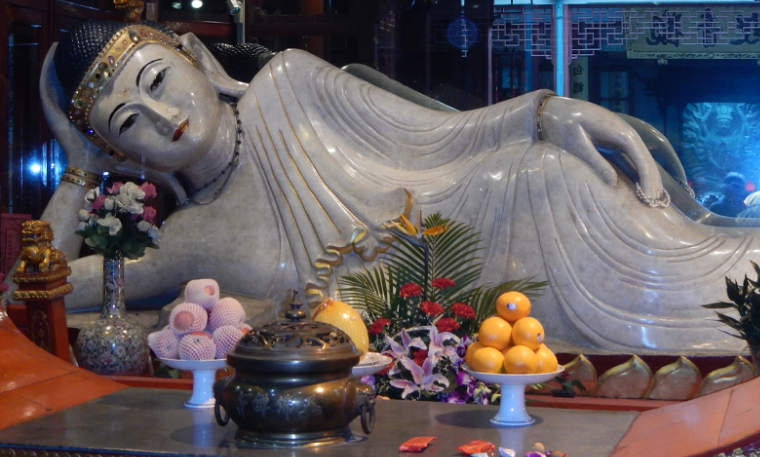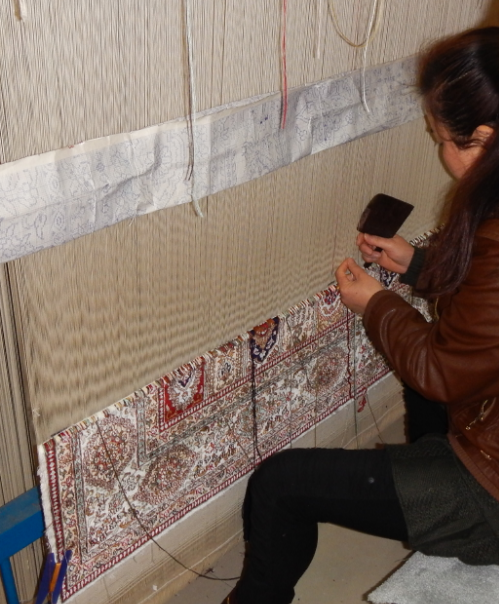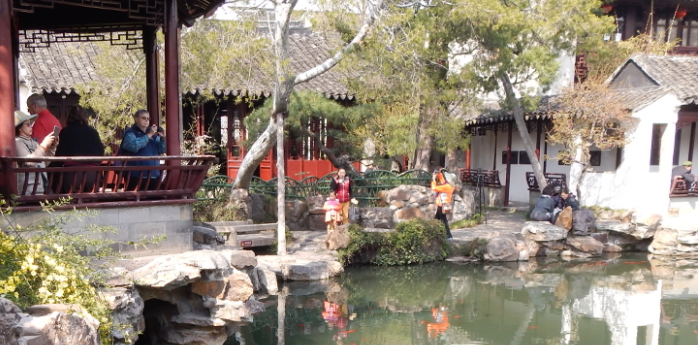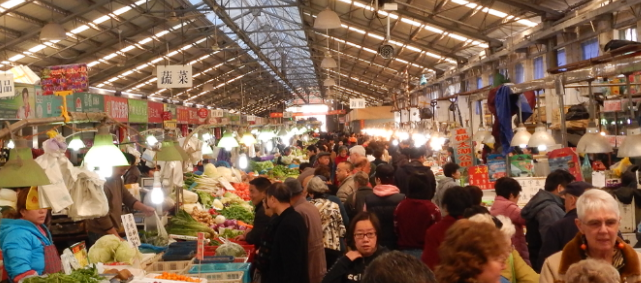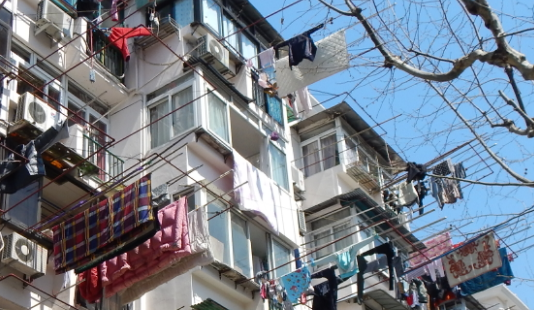In Shanghai, we began our tour by visiting the Jade Buddha Temple. The Jade Buddha is shown in a rather comfortable position.
Another factory tour, this time to see how to make a silk carpet.
We are trying to simplify our lives by getting rid of things rather than collecting things, so we brought back only a few inexpensive souvenirs. The tours are interesting and the objects for sale are uniformly of high quality. Several of our tour group did take advantage of their opportunities to purchase one-of-a-kind jewelry, art, or home furnishings.
We had some free time to explore the water front in Shanghai. As you can tell from the following photo, the air quality was not good, but it was not quite as bad as I had feared. One of these buildings is known locally as the ‘can opener’ and the one next to it soon be the tallest building in the city.
The next day we had our only ride on one of the fast trains on our day trip to Suzhou. Our current speed was shown on a screen at the front of our car. We got up to 243 km/hr, or about 151 mi/hr. Other bullet trains with fewer stops can achieve speeds of up to 400 km/hr. Bullet trains now generate more passenger miles in China than do domestic flights. New infrastructure, such as high-speed rails, modern highways, bridges, subway systems, and skyscrapers, was visible everywhere that we went in China.
The other reason from our trip to Suzhou was to take a boat ride on the canal. In addition to the Great Wall, ancient China’s second massive construction project was the Grand Canal, which provided an inland waterway between Beijing and southern China.
A visit to a Suzhou silk factory was one of our most interesting tours. The silk cocoon that is spun overnight by the silk worm is unwound from the outside the next day using a combination of human skill and machinery.
We visited some beautiful gardens that gave a glimpse of what life was like for wealthy Chinese before the Communist Revolution.
The market in Shanghai includes fish, vegetables, and meat. Walking through these crowded isles, we had to avoid a number of motor bikes with their horns honking.
Later we had lunch in a middle class home. It is a common sight to see laundry drying in the sun, even from some of the newer tall apartment buildings. This is an older unit, only six stories tall, too short to justify elevators.
After lunch we visited the Shanghai museum. It was a beautiful day, with visibility good enough to see some of its modern skyline.
The museum provides a glimpse of the 4000 years of well-documented history of the Middle Kingdom. Ancient Chinese not only considered themselves living in the center of civilization, but in fact living at the center of the universe. In their eyes, the rest of the world was filled with barbarians. Thus it was that China was very reluctant to open up to the rest of the world.
Next: Yangtze

